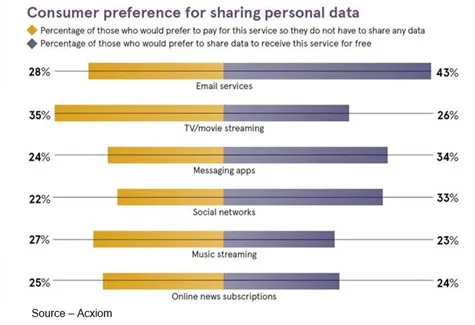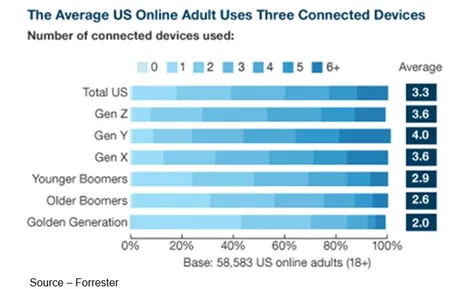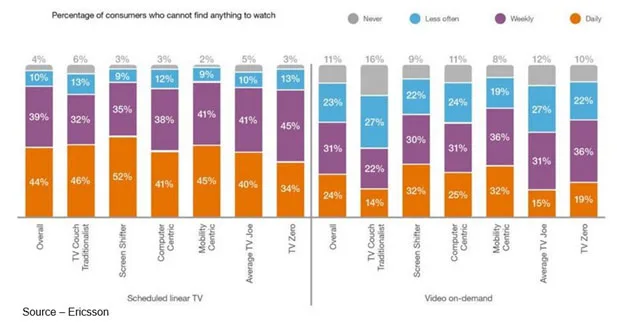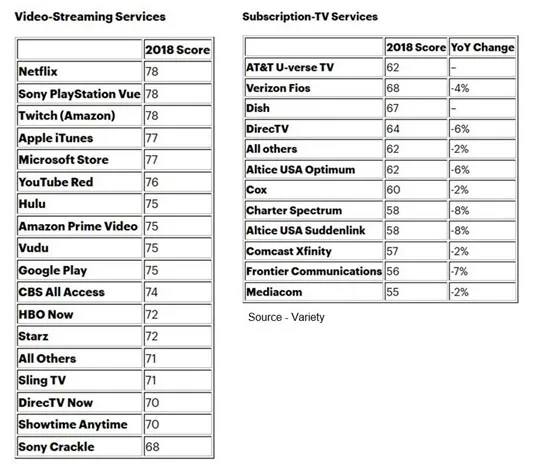Streaming Services Have a New Sales Feature … Personalization

Okay, GDPR (General Data Protection Regulation) is in place in Europe. “Everyone” is looking forward to it being the elixir to solving all of their security and privacy issues … even if they don’t precisely understand it.
After all, having greater control over how businesses can use your personal data has to be a good thing.
MediaPro found that 59 percent of those interviewed know little or nothing about it. Still, privacy of personal stuff, especially banking, financial and medical/healthcare information is important.
Folks like Google (Alphabet), Facebook, Twitter, WhatsApp, Tumblr and the rest of the social media crowd have made big bucks renting it out; and crooks are making a sweet income with it.
While Facebook’s Zuck told the U.S. Congress, Britain’s Parliament and EU’s ruling body that even though folks post way more than they should on social media, his company probably should do a little better job of protecting that data.
The other sites kept their heads down because well, they dodged the bullet.
Social media sites may not be the best places for expecting privacy, but wholesale personal data rental is a little over the top.
Users of Qzone, Sine Weibo and sites in certain countries like the idea too but … fat chance!
Social media shouldn’t take all the heat since people aren’t that confident their personal data is safe with their government, service providers and many of the places they buy stuff from.

Face it, the whole thing about privacy is largely contextual.
Social media like Facebook as a public forum, so you probably set the bar pretty low when it comes to expecting privacy. When it comes to people/firms you conduct business with or supply detailed personal information to, the bar goes higher and more rigid when disclosure can lead to physical and fiscal harm.
People are only mildly irritated when they see an ad slapped in the middle of their social media discussions. Yes, most are big, bold and bad; but they figure it’s the cost of the “free” service.
But when the **** ads follow you all over the web, it’s a little creepy. About as creepy as the wall in Minority Report welcoming Tom Cruise back to the store and making suggestions.

Okay, we know these folks have developed some sophisticated tracking and ad-targeting technology; but when your phone tells you the store you walked by is having a sale on the shirt you looked at last week … really?
The collision course comes when it comes to the growing volume of OTT (over the top) entertainment the content production and delivery industries are delivering globally.
Telco and cable providers are already rubbing their hands together because they see the potential big data they will be able to gather from all of our screen devices.
That’s probably why Comcast is willing to go to almost any length to acquire Sky away from the Disney/21st Century Fox potential merger.
Already one of the least-loved service providers in the U.S., Comcast sees the potential of the big data and data mining they can do with the volumes of consumer data and insights collected on their networks.

As Jeffries analyst Scott Goldman noted, they (and all service providers) can use the online activity, geographic data, income and viewership data to acquire/retain subscribers, target advertising and monetize content.
Disney, on the other hand, is focusing on expanding their content portfolio with the Fox purchase and quickly jumpstarting their distribution opportunities with the addition of Sky.
The business models are similar but different.
Comcast has historically made its money renting out bandwidth and selling ads. Disney has made money renting entertainment
While Parks Associates recently noted that nearly 90 percent of U.S. homes have TV sets, television has changed dramatically in recent years around the globe.
With a growing array of viewing options from streaming services, people can develop their own programming schedules; pick programs from an array of providers and, most important, can watch the material on a variety of screens.

Even when we’re together, we’re alone in our own entertainment bubble. watching different programs on different devices – TV set, tablet, laptop, smartphone.
Folks (especially in our household) choose what they want to watch and when. There’s no such thing as a captive audience.
When our home went OTT, we suffered from an overabundance of really great stuff to watch; to the point we couldn’t find the one thing we wanted to watch and were overwhelmed with choices.
“Personalization of content is what most viewers are interested in to help them navigate the thousands of similar titles available,” said Allan McLennan, Chief Executive of PADEM Media Group. “However, with that understanding of interest through data gathering and mining the viewer gives up privacy. Sometimes that is acceptable as a form of payment, but most of the time it’s not”

So just as we shaved and finally cut our cable service, we pared back the streaming services we subscribed to or went to in the case of ad-supported content (free stuff).
And before you ask, yes, we do save on our content entertainment bill.
Black Mirror is a great update to yesteryear’s Twilight Zone except for the fact that you think “Jeezz that could really happen!”
The ads on the free Roku channel seem even better. First, they’re shorter – like the idea of shows selling six-second ads this year – and they seem more personalized. We attribute that to better use of programmatics.
At the TV and Streaming Upfront presentations recently, almost everyone vowed to shrink commercial time and promised to make commercials more digital, relevant and targeted.
Makes watching ads more fun.
The old-fashioned TV Guide really doesn’t hack it anymore because content is spread all around the map and a scheduled viewing time is no longer necessary.
PwC recently reported that nearly two-thirds (62%) of consumers said they struggle to find something to watch, despite the fact that thee are so many choices available.
If we can figure out what we want to watch…BAM! it’s there. Any time, any screen.

No wonder eMarketer estimated that 177.7 million U.S. adults (70.3 percent of the population) use digital devices for watching TV.
Around the globe, boomers and above watch almost everything on the big screen. Pre-millennials are more likely to reach for their smartphone for viewing–even when they’re in front of the TV.
While Deloitte reports that 69 per cent of consumers believe companies aren’t doing enough to protect their data, advanced techniques like Netflix autoplay as well as similar data collection, profiling and personalization by the leading streaming services tend to provide immediate gratification and keep viewers connected to their services.
According to American Customer Satisfaction Index (ACSI) Netflix with a worldwide subscriber base of 360M has set the bar for video-distribution and dominates the subscriber-based services.
The company already dwarfs most media conglomerates, including Disney ($152.85B) as well as its customer-disliked rival Comcast – $153.8B vs $147.18B.

The streaming services have surpassed their cable, satellite and broadband video provider competitors in every customer satisfaction category – quality of service, customer service, billing clarity and service plans.
ACSI reported that the ISPs have succeeded in being less liked than business sectors such as airlines, hospitals, municipal utilities and the US Postal Service.
Carriers rush to acquire more content (AT&T/Times-Warner, Comcast/Fox, others) to flood customers with more stuff rather than interesting/appealing content because more is better.
Instead, streaming services divide their subscriber bases into taste communities based on viewing habits.
The advanced personalization techniques the streaming services use suddenly become a strong selling point for the firms to create a better, more transparent and trusting relationship with the customer.
The race is on to own the entire customer experience. The key is to dominate the viewer-centric content creation and delivery services and have a comprehensive data picture of the consumer to either present more personalized subscription entertainment or deliver hyper-targeted ads and content.
The challenge will be that it’s just really tough for the carriers with their subscription services to break bad habits that “worked” so well in the past.
 Or, as Martin Stett said, “We know that you know, Mr. Caul. For your own sake, don’t get involved any further. We’ll be listening to you.”
Or, as Martin Stett said, “We know that you know, Mr. Caul. For your own sake, don’t get involved any further. We’ll be listening to you.”
# # #